







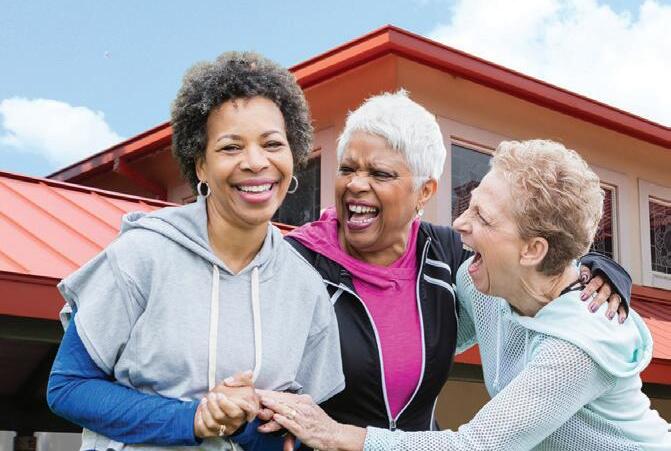






























































































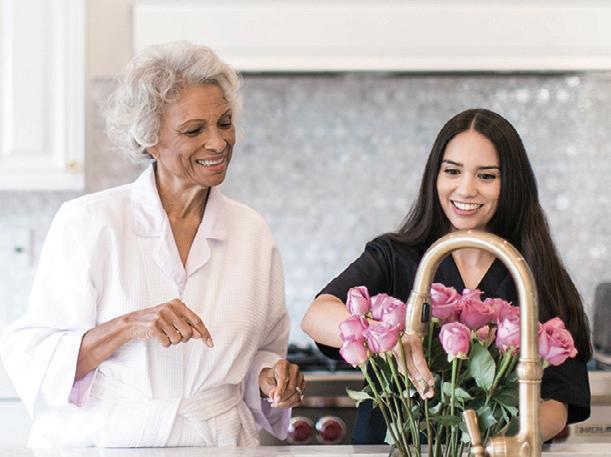

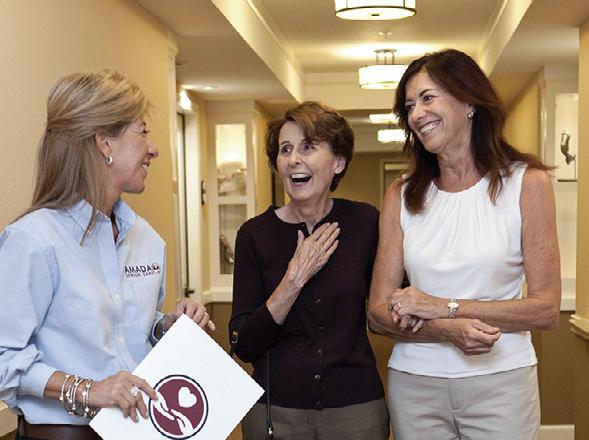



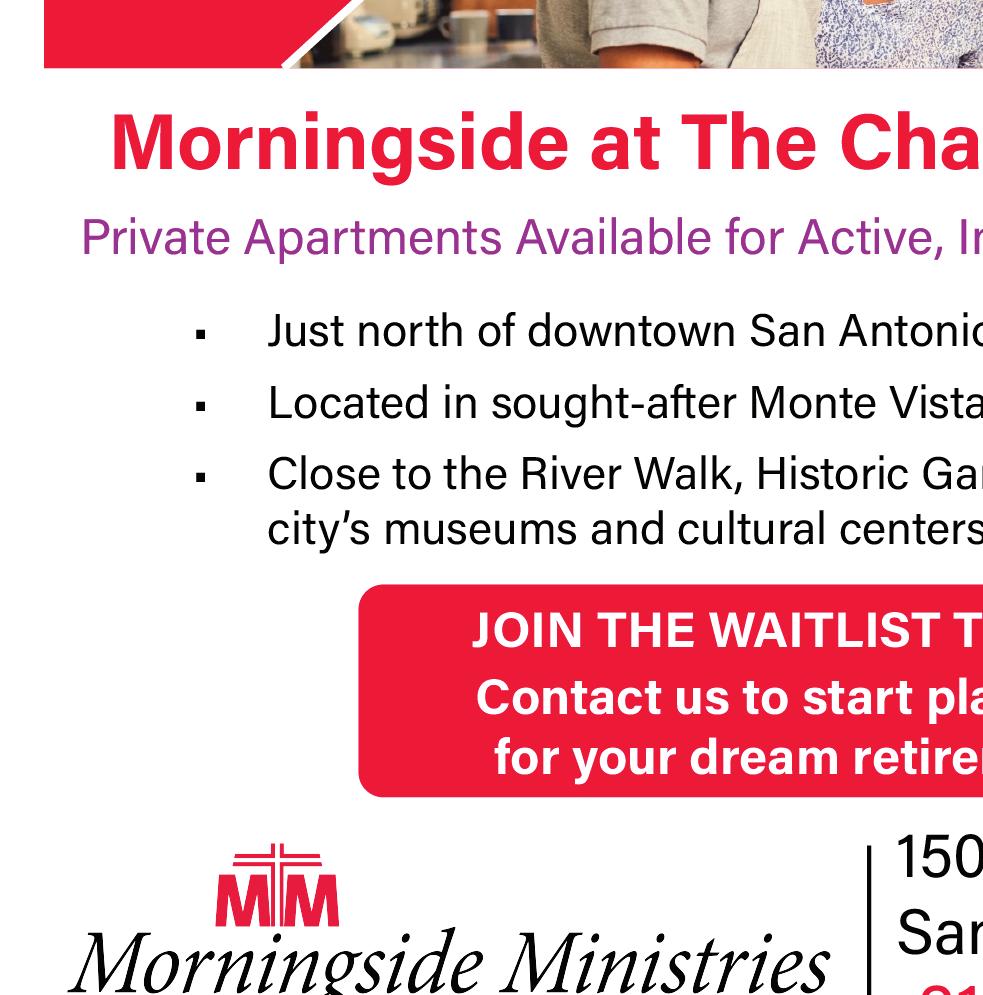
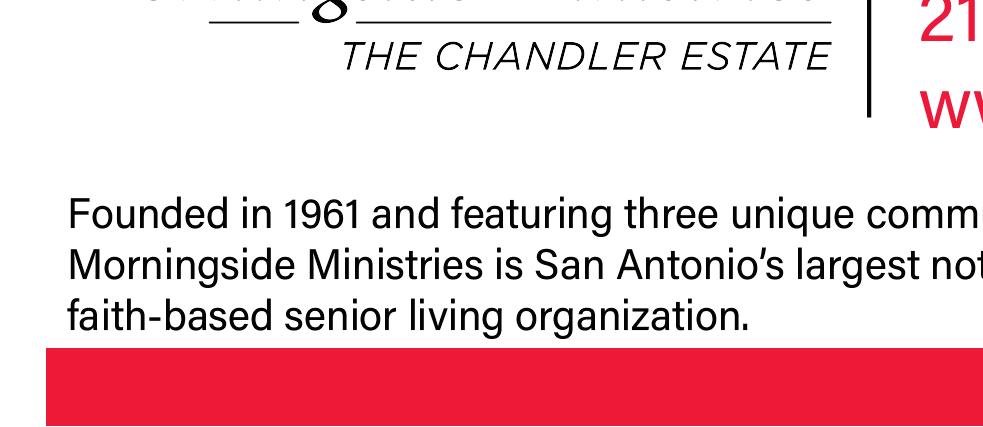

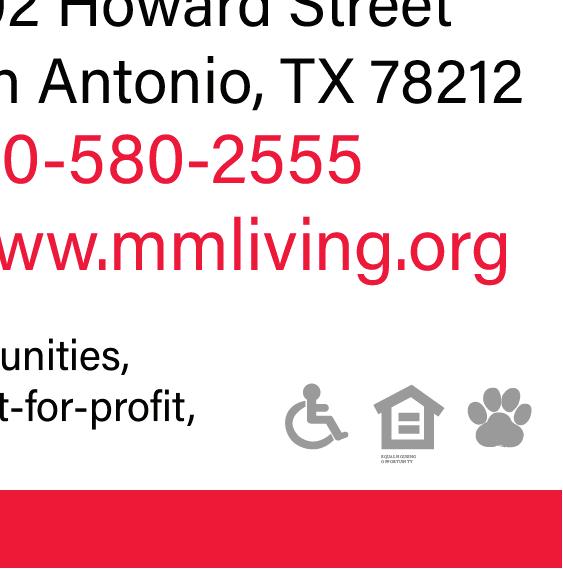

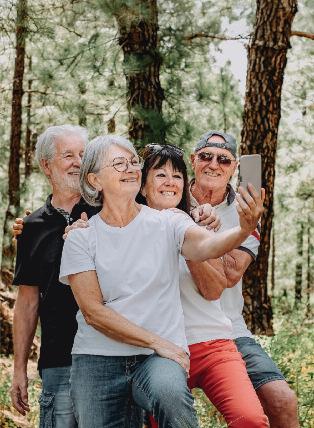









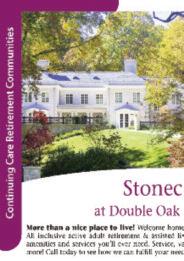
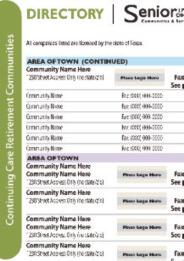
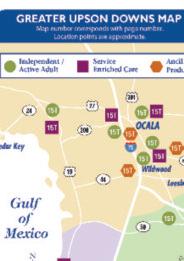


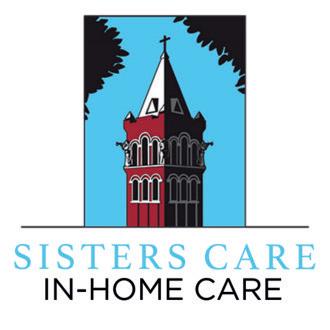




































































































































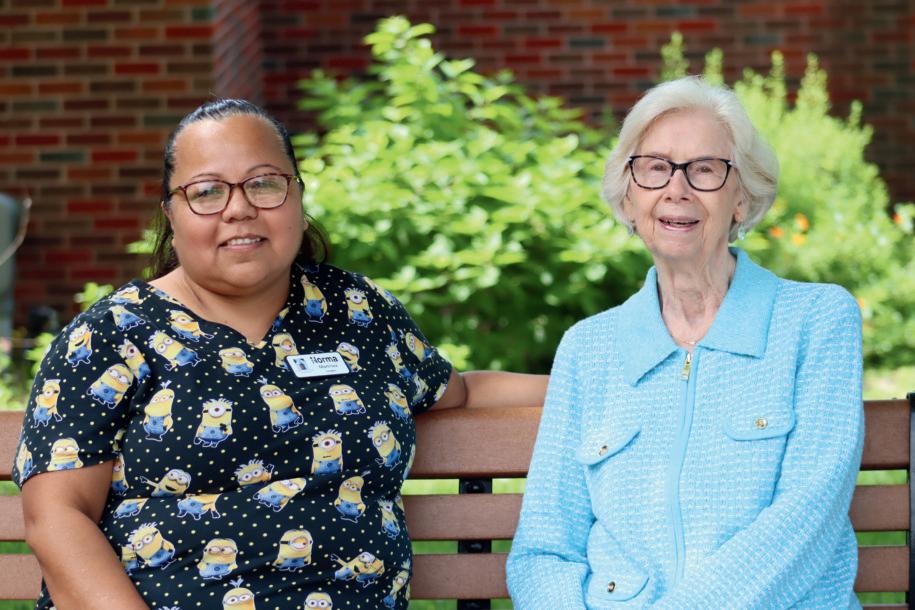













• Senior Home Care

• Respite Care
• Up to 24-Hour Care
• Managers available 24/7
• Meal Preparation
• Medication Reminders
• Light Housekeeping
FEDERAL & STATE AGENCIES
Medicare and Medicaid Services
www.cms.hhs.gov 800-633-4227
Medicare Prescription Coverage www.medicare.gov 800-772-1213
Nutrition Assistance Programs www.fns.usda.gov
Social Security Administration www.ssa.gov 1-800-772-1213 TTY 1-800-325-0778
Texas Department of Health & Human Services
dshs.state.tx.us 210-949-2000
Texas State Securities Board
(We regulate stockbrokers, investment advisors, and investments sold to Texans) www.ssb.state.tx.us
www.TexasInvestorEd.org
512-305-8300 866-663-0009
• Transportation
• Incontinence Care
• Bathing/Dressing
• Extensive Background Checks
• No Contract/No Deposit
• Free In-Home Consultation

CONSUMER INFORMATION
Adult Protective Services
800-252-5400
Bexar County Dispute Resolution Center 210-335-2128 www.bexar.org/drc
Commission on Legal Problems of the Elderly American Bar Assoc www.abanet.org/aging
Low Vision Resource Center & Owl Radio www.lowvisionclub.com 210-829-4223
Talking Book Program 800-252-9605 www.tsl.state.tx.us
Texas and New Mexico Hospice Organization 512-454-1247 www.txnmhospice.org







Personalized treatment plans with compassionate, comprehensive support for optimal health.

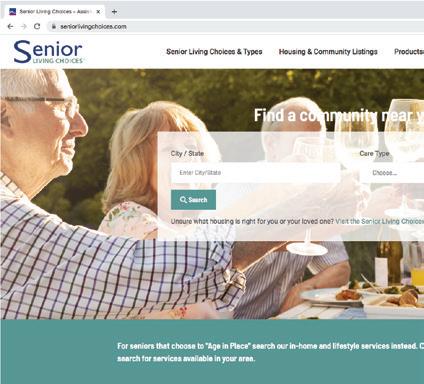



Brenda Dever-Armstrong, CEO/Owner/CSA/Geriatric Advisor Advocate, Services, Resources/Placement, Assisted Living Accredited Management Military Wife - 42 years

HEALTH
Alzheimer’s Assoc www.alz.org
800-272-3900 Help Line
American Cancer www.cancer.org
512-928-1144 Austin 210-614-4211 San Antonio
American Diabetes www.diabetes.org 800-252-8233
American Heart www.americanheart.org
512-433-4000 Austin 210-614-4121 San Antonio
American Red Cross www.redcross.org
512-928-4271 Austin 210-224-5151 San Antonio 830-257-4677 Kerrville
Arthritis Foundation www.arthritis.org
800-442-6683







Easter Seals www.easterseals.org 800-221-6827
National Parkinson Foundation www.parkinson.org 800-327-4545
FEDERAL & STATE AGENCIES
Area Agency on Aging
512-438-6208 Austin 210-477-3275 San Antonio 254-770-2330 Central Texas
Department of Veteran A airs
Veterans Bene ts Administration www.va.gov 800-827-1000 Austin 210-617-5300 San Antonio Meals on Wheels
512-476-6325 Austin 210-735-5115 San Antonio Medicare
When your loved one needs everyday help but doesn’t require medical attention, in‑home non‑medical care can be a lifeline. These services include assistance with bathing, dressing, meal prep, light housekeeping, and transportation—all delivered in your loved one’s own home. Providers, often called caregivers or companions, support daily living and ensure safety and well‑being. These services are not covered by Original Medicare, though Medicaid or long‑term care policies may provide funding. Families appreciate the comfort and familiarity of home, enabling loved ones to remain in place while receiving essential assistance tailored to their routines.
For those who need medically skilled services at home, home health care is a Medicare covered option. To qualify, the individual must:
Be under a physician approved care plan.
Be homebound, meaning it's difficult to leave home unassisted.
Require part time or intermittent care by a nurse or therapist
Covered services may include:
Skilled nursing care, such as wound care, injections, IV therapy, or disease monitoring.
Therapeutic services: physical, occupational, and speech therapy.
Home health aides who assist with bathing, dressing, feeding—only when skilled care is also provided.
Medical social services, like counseling.
Durable medical equipment and medical supplies
Original Medicare pays most home health costs in full, with no copay for services and a 20% coinsurance for durable equipment. Coverage is limited to part time/intermittent care (typically up to 8 hours a day and 28 hours a week). Full time custodial care is not covered.
When facing a life limiting illness, families may choose hospice care, which prioritizes comfort and quality of life rather than cure. Hospice services may be delivered at home or in a facility and include:
Pain and symptom management (palliative care)
Medical and nursing care, plus social work and spiritual support
Medications and medical supplies related to the terminal condition
Durable medical equipment, like hospital beds
Aide and homemaker services, and respite care for caregivers (up to 5 days)
Grief and spiritual counseling for families
Hospice care is free under Medicare, though there may be small copays for medications or inpatient respite care. Original Medicare also continues to cover unrelated healthcare needs.
While Medicare covers skilled medical services and hospice, it does not pay for long‑term care (custodial services like bathing, dressing, homemaker tasks) . For long term care, Medicaid may provide support through home and community based services or coverage of facility care, depending on eligibility and state rules .
Choosing the Right Care
Here’s a simple framework for deciding which care fits best:
Non‑Medical In‑Home Care – ideal for help with daily living when no medical supervision is needed.
Home Health Care – appropriate if medical treatments or therapy are required, and qualification criteria are met.
Skilled Rehab at Home – for recovery after hospitalization that includes physical or occupational therapy.
Hospice Care – for end‑of‑life comfort when curative medicine is no longer the goal.
Medicaid Support or PACE – when long term custodial care is needed but not covered by Medicare.
Each type of care offers unique advantages:
In‑home non‑medical care brings personal support and independence in a familiar environment.
Home health care delivers effective medical treatment without hospitalization.
Hospice care ensures dignity, comfort, and compassionate support for both patient and family.
Medicaid and PACE provide essential resources for long term needs not covered by Medicare. By understanding these options—and reviewing Medicare.gov or contacting your local Area Agency on Aging—you can plan a care strategy that aligns with your loved one’s medical needs, personal comfort, and financial resources.


1. Aging Gracefully Assisted Living
2. Ashford Wellington
3. Augusta at Gruene,The
4. Bel Air at Terra Vista by Cantex
Scan QR code to view communities online
5. Bowers Personal Care Home,The
6. Care With Diginity
7. Coronado at Stone Oak by Cantex
8. Elan Westpointe
9. Huntington,The
10. La Vista Apartments
11. Morningside Ministries at The Chandler Estate
12. Morris Manor at Aston Park
13. Right at Home Seior Care, LLC
14. Safe Harbor Care Home
15. Silver Oaks Villas
16. Sorrento by Cantex
17. Village at Collinwood
18. Village at Incarnate Word,The
19. Windemere at Westover Hills by Cantex
Junction
Numbers on map corresponds with numbers on pg 15. Location points are approximate.






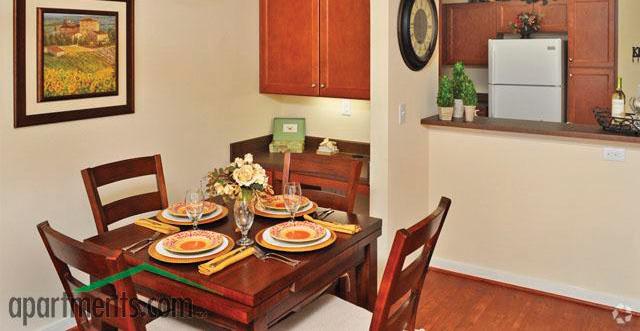
•
•






Welcome HOME! Your new apartment is waiting for you! e Village at Collinwood is a community set apart from the standard one-size- ts-all lifestyle! Here we are focused on an environment that is resident centered. Being a part of this community, comes with an EXTRA element of unity and family. We value each and every one of our residents and our sta strives to personally connect with everyone who lives here. We o er spacious 1 & 2 bedroom apartment homes. We have incredible amenities that will perfectly t your active lifestyle, so you can live life to the fullest. We are close to a variety of shopping and dining experiences. Our Leasing Agents are standing by to o er you a Video or In-Person tour, so call us TODAY!
BENEFITS / SERVICES HOUSING OPTIONS
• Valet Trash Service
• Elevators
• Covered Parking
• Limited Access Entry Gates
• Pet Friendly
• Walk-in Closets
• Handicap Accessible

Enjoy the Serenity of Independent Living. Located in the Heart of Texas just on the outskirts of San Marcos, La Vista is independent living at its nest, o ering spacious 1 & 2 bedroom oorplans, conveniently grouped in our one-story community. Come and join our family.


Austin, Texas
1001 Collinwood West Dr Austin, TX 78753


OFFICE HOURS
M-F 8:30 - 5:30 pm
Saturday Closed
Sunday Closed

DIRECTIONS
IH35N take the 243 exit toward Braker Ln, turn right on E Braker Ln, take a right on Blu Bend Dr, we are on the left.

San Marcos, Texas 1615 Redwood Road San Marcos, Texas 78666 Local & Toll Free:
BENEFITS / SERVICES HOUSING OPTIONS
• Transportation Services
• Social & Recreational Activities
• Hair Salon
• Congregate Meals
VISITS & TOURS
Monday - Friday 8:00 - 4:00 Saturday by appointment
• Swimming Pool
• Washer & Dryer Connections
• Laundry Facilities
• Pet Friendly
DIRECTIONS
Take IH35 to San Marcos, exit Wonder World Dr. Go east on Wonder World Dr. Cross Hwy. 123. O road on your left.
Affordable senior apartment communities offer older adults a safe, accessible, and cost-effective housing option, often advertised specifically as “affordable” or “income-based.” These communities are designed for seniors on a fixed income, typically aged 55 or 62 and older, and may include amenities such as elevators, community rooms, and emergency call systems. Many of these developments are made possible through the Low-Income Housing Tax Credit (LIHTC) program, administered by HUD, which provides tax incentives to developers in exchange for keeping rents affordable. When applying, seniors must meet income eligibility requirements, usually based on a percentage of the area median income (AMI). The application process generally includes providing proof of income, assets, age, and household size, as well as passing a background and credit check. There may be a waitlist due to high demand, but once approved, qualified seniors gain access to stable, well-maintained housing at reduced rental rates. These communities help ensure that older Texans can live independently with dignity, even on limited financial means.










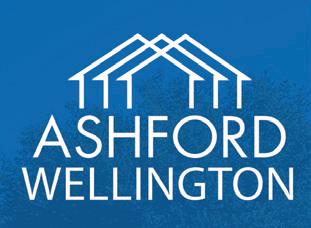


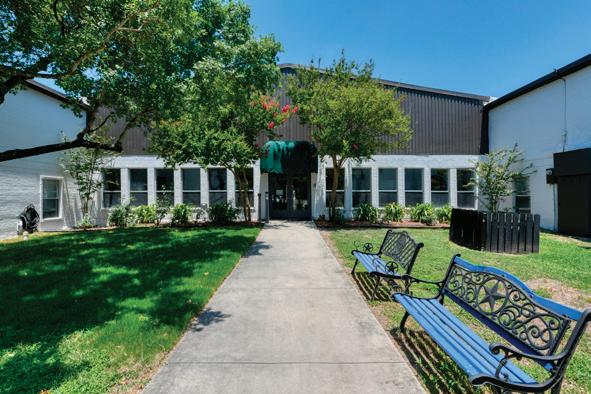








Augusta at Gruene, The Pg 19
Silver Oaks Villas Pg 20
Morningsie at the Chandler Estate Pg 4
Ashford Wellington Pg 20
Active adult communities for individuals 55+—whether age-restricted or age-targeted—offer low-maintenance homeownership with a built-in lifestyle focus. These neighborhoods typically consist of single-family homes, cottages, patio homes, condominiums, or townhomes. A monthly association fee often covers exterior maintenance, landscaping, and shared amenities, allowing residents to enjoy a worry-free lifestyle. Homes are usually designed with aging in place in mind, offering open layouts, single-level living, and accessible features.
55+ apartment communities provide rental-based living with similar age restrictions but without the responsibilities of homeownership. These apartments are ideal for those who prefer flexibility, minimal upkeep, or want to avoid long-term property commitments. Amenities often include on-site staff, fitness rooms, social activities, and maintenance services.
While both types of communities offer opportunities for active, independent living and social connection, the key difference lies in ownership and commitment. Homeownership provides long-term investment potential and a sense of permanence, while apartment living offers mobility and convenience for those looking to downsize or keep options open.
Both appeal to older adults seeking community, security, and lifestyle-enhancing amenities—just in different ways.

Not long ago, while waiting for my routine checkup, I found myself watching a television program featuring “extreme low impact exercises” designed specifically for older adults. It made me think of my friend Margaret. At 94, Margaret still moves through her evening routine of leg lifts, arm circles, ankle rotations, and gentle back stretches. Her consistent habit of daily movement may very well be one of the reasons she remains so vibrant today.
For retirees and seniors 65+, staying active plays a crucial role in maintaining independence, reducing health risks, and simply feeling good. The benefits of regular low impact exercise are well known: improved balance and flexibility, stronger muscles, healthier blood pressure, reduced stress, and better cardiovascular health—all without putting strain on joints or risking injury.
Here are several low impact activities that are ideal for seniors and retirees:
Whether it's around the neighborhood,
at a local park, or even inside your home, walking is one of the simplest and most effective ways to stay active. Many senior centers and YMCAs also offer walking clubs for extra motivation and social engagement.
Stationary bikes provide an excellent cardio workout with minimal stress on knees and hips. Outdoor cycling can be equally enjoyable, weather permitting, while giving you the added benefit of fresh air.
Water exercises are especially gentle on aging joints. Many local community centers, senior centers, and YMCAs offer water aerobics and lap swimming programs designed for seniors.
Light weight training helps maintain muscle strength and bone density, both of which naturally decline with age. Small hand weights, resistance bands, or body-weight exercises can all be effective. Always check with your doctor or a fitness professional to design a safe program.
Yoga is excellent for improving flexibility, balance, and relaxation. Many senior centers and online programs offer beginner-friendly yoga classes tailored to older adults.
Don’t underestimate the value of tending to a garden. Planting, weeding, and watering involve bending, stretching, and lifting—providing a natural full-body workout while offering the reward of fresh flowers or produce.
For those who need additional support or are less mobile, seated exercises are a safe option to maintain joint flexibility and circulation. Movements can include arm circles, ankle rotations, and gentle stretches.
8. Join a Class or Follow Online Programs
Many local senior centers, YMCAs, and even churches offer fitness classes specifically for older adults. Additionally, countless free exercise programs are available on YouTube and other social media platforms, making it easy to find guided routines from the comfort of home.
The key is consistency. Regular movement—whether big or small—can help retirees stay active, independent, and healthier well into their later years. And as always, before starting any new exercise routine, be sure to consult your doctor to make sure it's appropriate for your personal health situation.

Independent Retirement Living communities offer vibrant, maintenance-free housing for older adults—typically aged 55 and up—who want to enjoy their golden years without the burden of household chores, while still embracing their independence. Residents live in private apartments, cottages, or villas, while the community handles housekeeping, linen service, laundry, maintenance, and landscaping. Most communities feature restaurant-style, chef-prepared meals served in elegant dining rooms, often with multiple dining options and flexible meal plans. Beyond dining, residents enjoy a robust calendar of activities that may include fitness classes like yoga or water aerobics, educational seminars, hobby clubs, art studios, live entertainment, and outings to local attractions. Amenities often include 24/7 security, emergency response systems, scheduled transportation, concierge services, on-site salons, libraries, theaters, pools, and fitness centers—all designed to enhance comfort, convenience, and social engagement. Many are part of continuing care retirement communities (CCRCs), allowing “aging in place” care options ranging from independent through assisted living and nursing support—all on one campus. The result is a luxurious, socially enriching, and secure environment where older adults can relax, connect, and thrive.














For many families, finding the right balance between safety, support, and comfort for a loved one can be challenging. While large assisted living communities offer excellent care, some individuals may benefit from a smaller, more intimate environment. This is where licensed small assisted living in a residential setting becomes a valuable option. In Texas, these homes operate under a state license issued by Texas Health and Human Services (HHSC) as Assisted Living Facilities – Type A or Type B depending on the level of care provided. Most small residential assisted living homes fall into Type B, which allows them to care for individuals who may require more hands-on assistance or overnight help.





Personal Care Homes provide a warm, home-like setting for seniors who need daily assistance. Typically serving up to three residents, these homes do not require a license in the state of Texas. These small homes offer personalized care with help in bathing, dressing, mobility, meals, and overall wellbeing. The intimate environment allows caregivers to give each resident focused attention while fostering strong relationships. Shared meals and light activities create a sense of community, helping residents maintain independence and dignity. Personal care homes offer a comforting alternative for seniors seeking supportive care in a familiar, residential setting.
Westpointe Pg 25
Small Assisted Livings on page 26
Assisted Living Communities provide a supportive environment for seniors and individuals who need help with daily living activities while still maintaining as much independence as possible. These communities offer assistance with personal care tasks such as bathing, grooming, dressing, mobility, medication management, and other daily routines.
Assisted living communities in Texas typically offer semi-private or private living accommodations, along with a wide range of services and amenities that may include:
• Three nutritious, chef-prepared meals daily
• Scheduled recreational, educational, and social activities
• Housekeeping and laundry services
• Transportation to medical appointments and errands
• 24-hour staff availability for emergencies
• Beautifully designed common areas, landscaped grounds, and secure environments
These communities create a warm, engaging atmosphere where residents can enjoy companionship, safety, and peace of mind, while families gain confidence knowing their loved one is receiving quality care in a licensed setting.
All companies listed are licensed by the state of Texas.
Property Name Address Phone
NEW BRAUNFELS
Elan Westpointe Pg 25
2140 Independence Dr. 830-214-1788 • • • 128
Village at Incarnate Word, The Pg 2 4704 Broadway 210-598-8300 • •
When a loved one is living with Alzheimer's disease or another memory-related disorder, it can be overwhelming for families to ensure they’re receiving the care, safety, and support they need. That’s where Alzheimer’s and Memory Care Communities come in — offering specialized care tailored specifically for individuals with memory impairment.
These communities are either dedicated stand-alone facilities or specialized secured wings within larger senior living communities. They are thoughtfully designed to meet the unique physical, emotional, and cognitive needs of residents who are living with Alzheimer’s disease, dementia, or other types of memory loss.
Specialized Environment:
The physical design of a memory care community is built to reduce confusion and agitation. You’ll often find clearly marked hallways, enclosed outdoor spaces, secure entryways, and calming, easy-to-navigate layouts to promote safety and comfort.
Trained Caregivers:
Staff receive ongoing training in dementia care techniques, communication strategies, and behavioral management. Caregivers are skilled in understanding the challenges of memory loss and how to compassionately support residents throughout their day.
24/7 Support and Supervision:
Memory care residents receive around-the-clock care, ensuring their safety and well-being at all times. This includes assistance with daily activities such as bathing, dressing, grooming, medication management, and mobility.
Structured Daily Routine:
Consistent daily schedules help reduce anxiety and confusion. Programs often include cognitive therapies, music, art, physical exercise, sensory activities, and social engagement tailored to each resident's abilities and interests.
Family Involvement:
Many communities encourage and support family participation, offering educational resources, support groups, and regular communication to help families stay involved and informed about their loved one’s care and progress.
Focus on Quality of Life:
The goal is not only to meet medical and physical needs but also to enhance emotional well-being, preserve dignity, and create meaningful daily experiences. Many memory care programs are designed to spark joy, honor personal history, and provide a sense of purpose.
If your loved one is beginning to struggle with increased memory loss, confusion, wandering, or behavioral changes, a memory care community may offer the ideal balance of safety, personal care, and specialized support. These communities are uniquely equipped to handle the changing needs of individuals with progressive memory conditions, while giving families peace of mind knowing their loved one is in capable, compassionate hands.




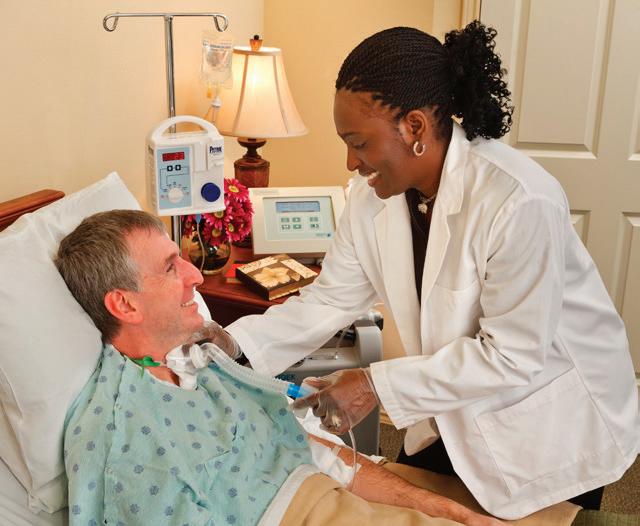


























Skilled Nursing and Physical Rehabilitation communities provide around-the-clock medical care and support for individuals who need more advanced clinical attention than can be provided in assisted living or at home. These communities offer a highly supervised, hospital-like setting combined with the comfort of semi-private or private living accommodations.
Residents receive 24-hour nursing supervision delivered by licensed nurses, certified nursing assistants, and a full team of healthcare professionals. The level of care is personalized based on each resident’s medical condition, recovery goals, and long-term care needs.
Many Skilled Nursing Facilities (SNFs) and Physical Rehabilitation Centers specialize in various levels of care, which may include:
• Short-Term Rehabilitation: After surgery, illness, or injury, residents may receive physical therapy, occupational therapy, and speech therapy designed to help regain strength and independence before returning home.
• Acute or Complex Nursing Care: For those requiring intensive medical attention, wound care, IV therapies, or respiratory support.
• Intermediate Care: For individuals who need regular nursing care but not intensive hospital-level services.
• Long-Term Skilled Nursing: For chronic health conditions that require extended nursing care, ongoing supervision, and personal care support over a longer period.
In addition to medical services, Skilled Nursing and Rehab communities typically offer:
• Daily meal services tailored to dietary needs
• Assistance with personal care such as bathing, dressing, and grooming
• Medication management and administration
• Social and recreational activities designed to promote engagement and emotional well-being
• Housekeeping, laundry, and maintenance services
These communities serve individuals recovering from a hospital stay as well as those with chronic conditions that require continuous care. Families often turn to Skilled Nursing or Rehab communities for peace of mind, knowing their loved one is receiving comprehensive medical oversight in a supportive, caring environment.
Many Americans are fortunate to have dental coverage for their entire working life, through employer-provided benefits. When those benefits end with retirement, paying dental bills out-of-pocket can come as a shock, leading people to put off or even go without care.
Simply put — without dental insurance, there may be an important gap in your healthcare coverage.
Look for coverage that helps pay for major services. Some plans may limit the number of procedures — or pay for preventive care only.
Look for coverage with no deductibles. Some plans may require you to pay hundreds out of pocket before benefits are paid.
Shop for coverage with no annual maximum on cash benefits. Some plans have annual maximums of $1,000.
Medicare doesn’t pay for dental care.1
That’s right. As good as Medicare is, it was never meant to cover everything. That means if you want protection, you need to purchase individual insurance.
Early detection can prevent small problems from becoming expensive ones.
The best way to prevent large dental bills is preventive care. The American Dental Association recommends checkups twice a year.
Previous dental work can wear out.
Even if you’ve had quality dental work in the past, you shouldn’t take your dental health for granted. In fact, your odds of having a dental problem only go up as you age.2
Treatment is expensive — especially the services people over 50 often need.
Consider these national average costs of treatment ... $222 for a checkup ... $190 for a filling ... $1,213 for a crown.3 Unexpected bills like this can be a real burden, especially if you’re on a fixed income.




